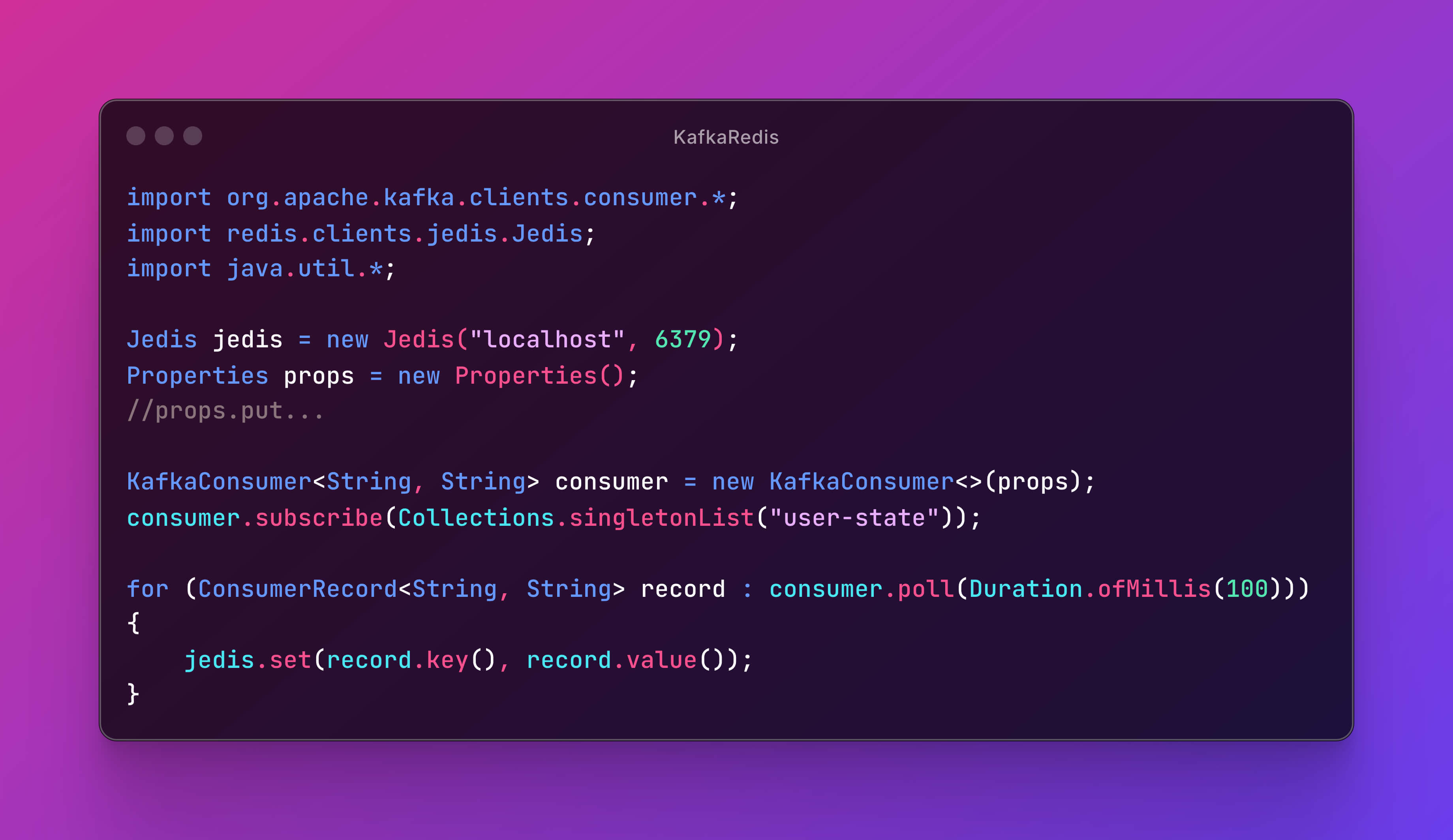A common and highly effective pattern is to use Kafka as the event stream and Redis as the fast-access key-value store. This setup allows you to react to state changes in real-time and provide instant lookups without hammering your primary database.
How It Works:
A Kafka Consumer subscribes to a compacted topic (for example, user-state).
For every incoming event:
- It processes the message.
- Updates Redis with the new key-value pair (e.g.,
user_id -> serialized_data).
Here’s an example in Java:
import org.apache.kafka.clients.consumer.*;
import redis.clients.jedis.Jedis;
import java.util.*;
Jedis jedis = new Jedis("localhost", 6379);
Properties props = new Properties();
props.put("bootstrap.servers", "localhost:9092");
props.put("group.id", "cache-sync");
props.put("key.deserializer", "org.apache.kafka.common.serialization.StringDeserializer");
props.put("value.deserializer", "org.apache.kafka.common.serialization.StringDeserializer");
props.put("auto.offset.reset", "earliest");
KafkaConsumer<String, String> consumer = new KafkaConsumer<>(props);
consumer.subscribe(Collections.singletonList("user-state"));
for (ConsumerRecord<String, String> record : consumer.poll(Duration.ofMillis(100))) {
jedis.set(record.key(), record.value());
}
Benefits:
- Redis delivers sub-millisecond reads, perfect for high-frequency lookups.
- Kafka acts as the source of truth, holding the event history and ensuring resilience.
- Rehydrating the Redis cache is simple: just restart the consumer with
auto.offset.reset=earliest.
Use Cases:
- User profiles
- Configuration settings
- Device states
- Any frequently read data that changes infrequently
This setup is scalable, reactive, and simplifies the architecture for systems that need fast access to changing data without compromising on consistency.


